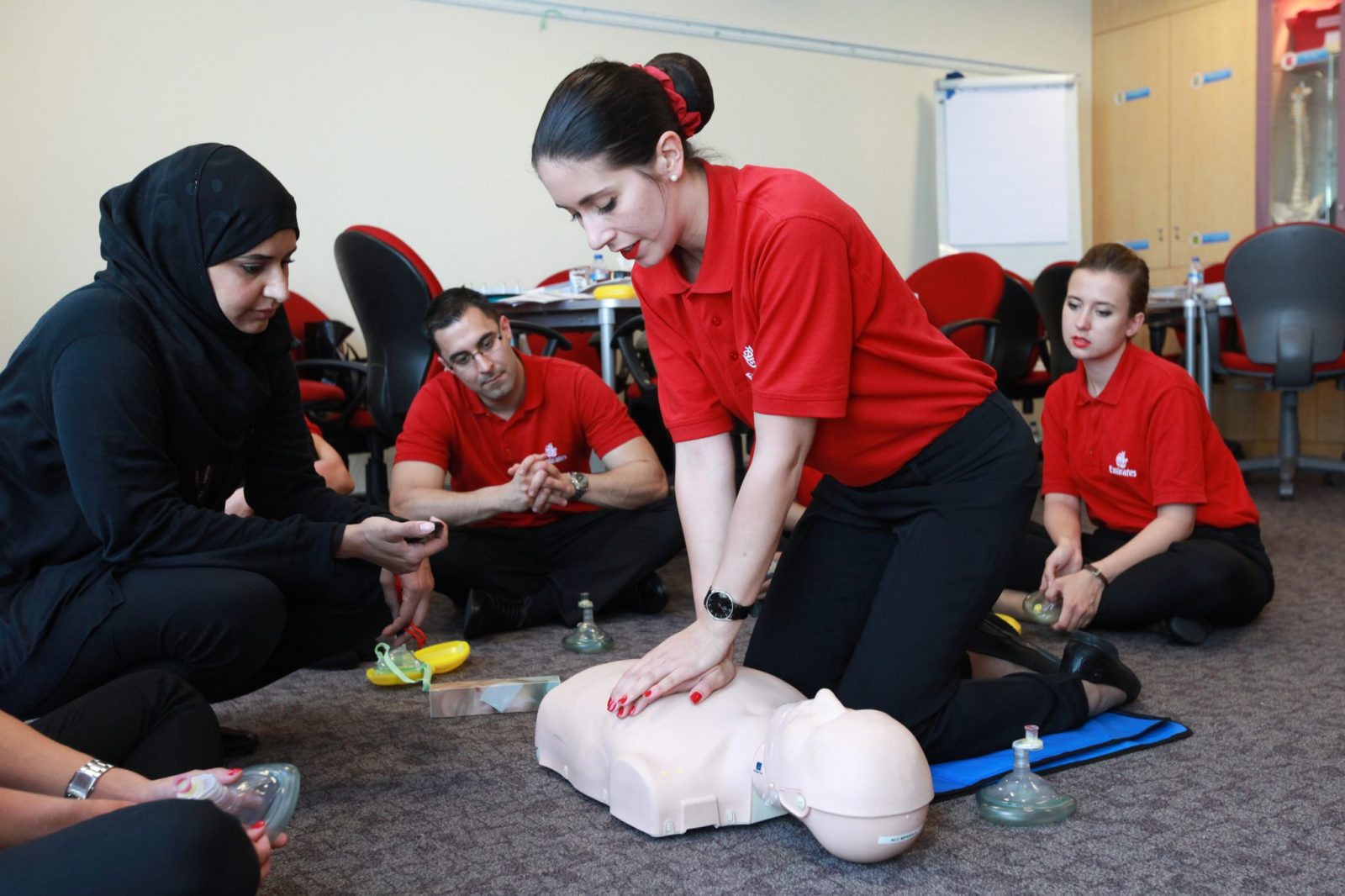
Emirates, the world’s largest long-haul airline, estimates the cost of diverting a flight when a medical emergency occurs onboard can lose their airline between $50,000 to $600,000. Refuelling the aircraft, passenger compensation, ground handling fees and other associated costs all quickly mount up to create a major headache for Emirates – or any other airline in the same position.
Last year the Dubai-based airline operated more than 194,000 flights and while the total number of onboard medical emergencies was small, Emirates has seen a gradual increase over the last few years. In fact, last year alone Emirates were forced to divert 60 flights because people were taken ill onboard. That’s a potential bill of at least $3 million USD in just one year.
From a business minded and hard-nosed money making point of view it’s hardly surprising that airlines take the health and safety of everyone onboard so seriously. But as Adel Al Redha, the Executive Vice President and Chief Operating Officer at Emirates points out, providing good medical care for passengers isn’t just a money-saving exercise:
“We can never hope to recover the costs of a flight diversion, but the wellbeing of our customers is always our number one priority…. At Emirates, like everything else we do, the safety of our passengers comes first. If there is a medical emergency on board, our crew have the training and equipment to help them assess the situation, and deliver the best possible outcome for the affected passengers.”
Redha claims that “airlines handle medical emergencies differently, as there are no international regulations on this front.” Although global standards are patchy this isn’t strictly true – especially in Europe where there are minimum standards for the training that all cabin crew receive.
In fact, the list of conditions and situations that flight attendants are taught to handle is comprehensive and in-depth. Topics include:
- Heart attacks and strokes,
- Childbirth,
- Epileptic seizures,
- Strokes,
- Asthma,
- and allergic reactions.
European cabin crew also have to go through basic First Aid training that includes air sickness, burns, wounds, fractures, gastrointestinal problems and of course, CPR. Then they have to undergo a rigorous exam to prove they have the skills and knowledge to perform this medical training – all within the confines of an aeroplane.
With hundreds of passengers all cramped into such a small space, the EU also lays down strict rules on hygiene and infectious diseases. Flight attendants must know how to handle clinical waste, aircraft disinsection and general hygiene rules on-board. They’re even taught what to do when someone dies mid-flight
It’s understood that although Emirates is not governed by EU law, the GCAA mandates very similar rules for cabin crew based in the UAE. This includes annual recurrent (refresher) training to keep all these skills up to date. In fact, as part of this programme, Emirates delivered 23,000 hours of training to their cabin crew and pilots in 2016.
In a statement, Emirates points out that the training helps cabin crew deal with the mundane and common medical issues but “more importantly handle rare but life-threatening events when time is of the essence.”
To help flight attendants deal with the rare medical emergencies many airlines have state of the art medical supplies kept onboard their aircraft. From basic First Aid kits to specialist packs that only doctors are trained to use. You’ll also find medical oxygen, a defibrillator and resuscitation equipment.
Some airlines, including Emirates even have access to a 24/7 satellite link with trained medical doctors – anywhere in the world. One of the biggest suppliers of such systems, MedAire claim that 80-90% of all cases are resolved in-flight when crew contact them onboard.
The company says of the services it provides: “MedAire manages thousands of in-flight medical emergencies every year and can facilitate communications in more than 140 languages. MedAire’s physicians manage every case to clinical standards, including full reporting.”
New cabin crew will normally receive a full week or First Aid training in their initial training course. This will comprise of both theoretical and practical elements including exams and practical tests. Each year, flight attendants will be expected to prove that they still possess these skills in annual recurrent training.
Mateusz Maszczynski honed his skills as an international flight attendant at the most prominent airline in the Middle East and has been flying ever since... most recently for a well known European airline. Matt is passionate about the aviation industry and has become an expert in passenger experience and human-centric stories. Always keeping an ear close to the ground, Matt's industry insights, analysis and news coverage is frequently relied upon by some of the biggest names in journalism.







